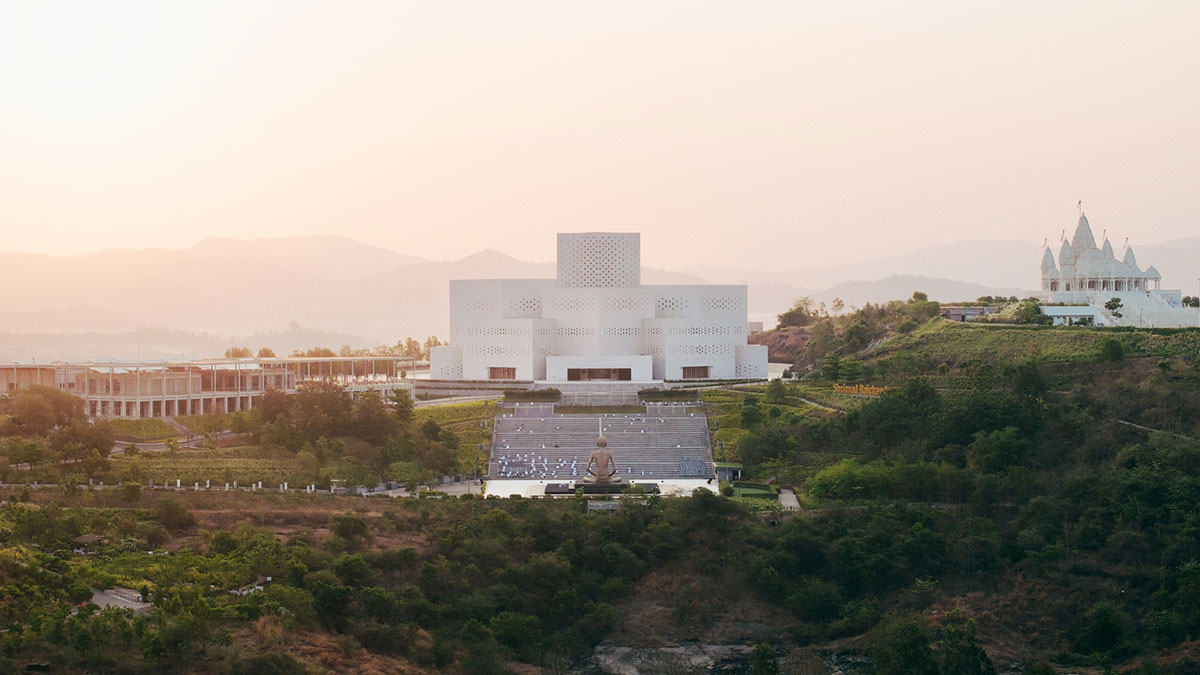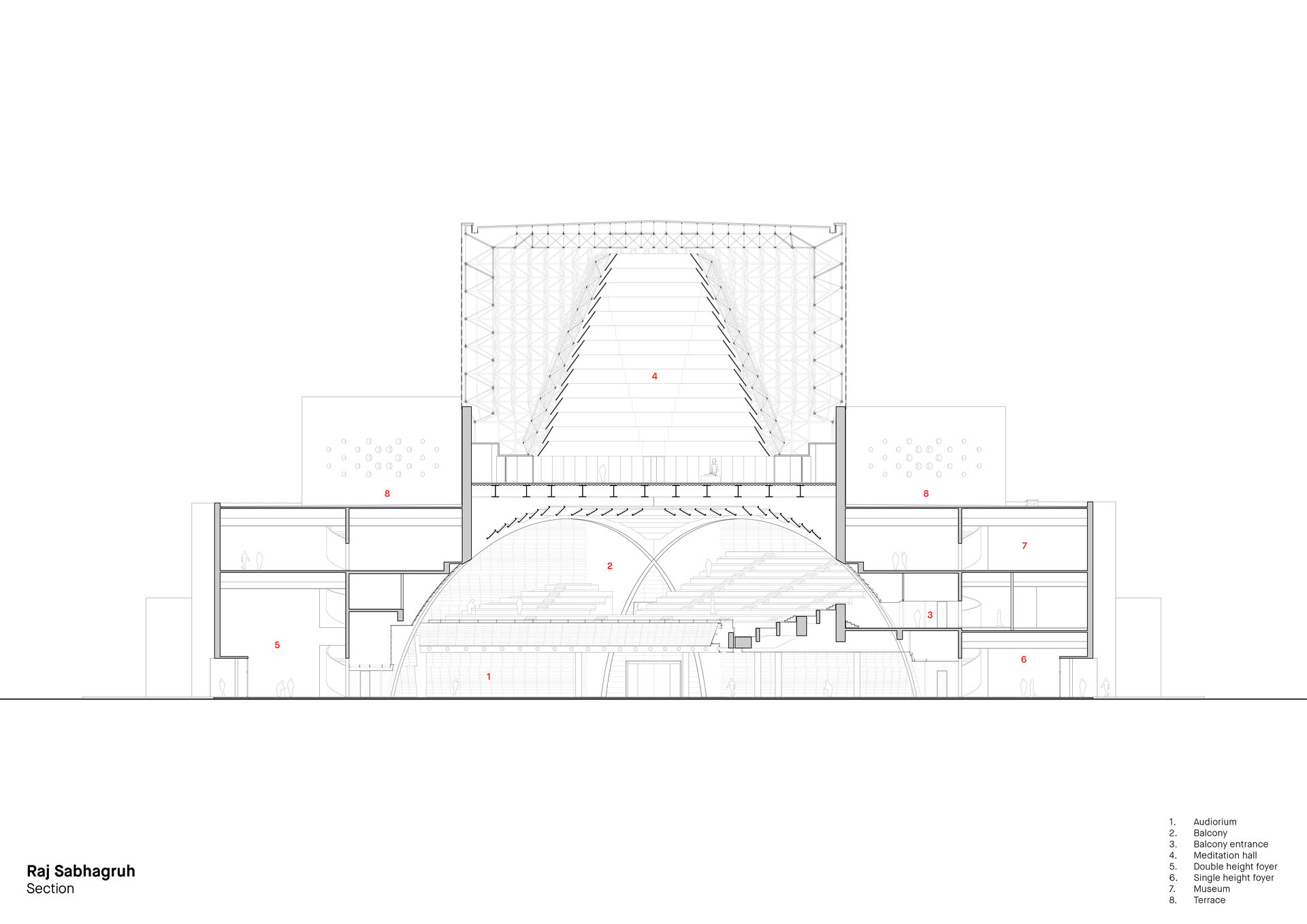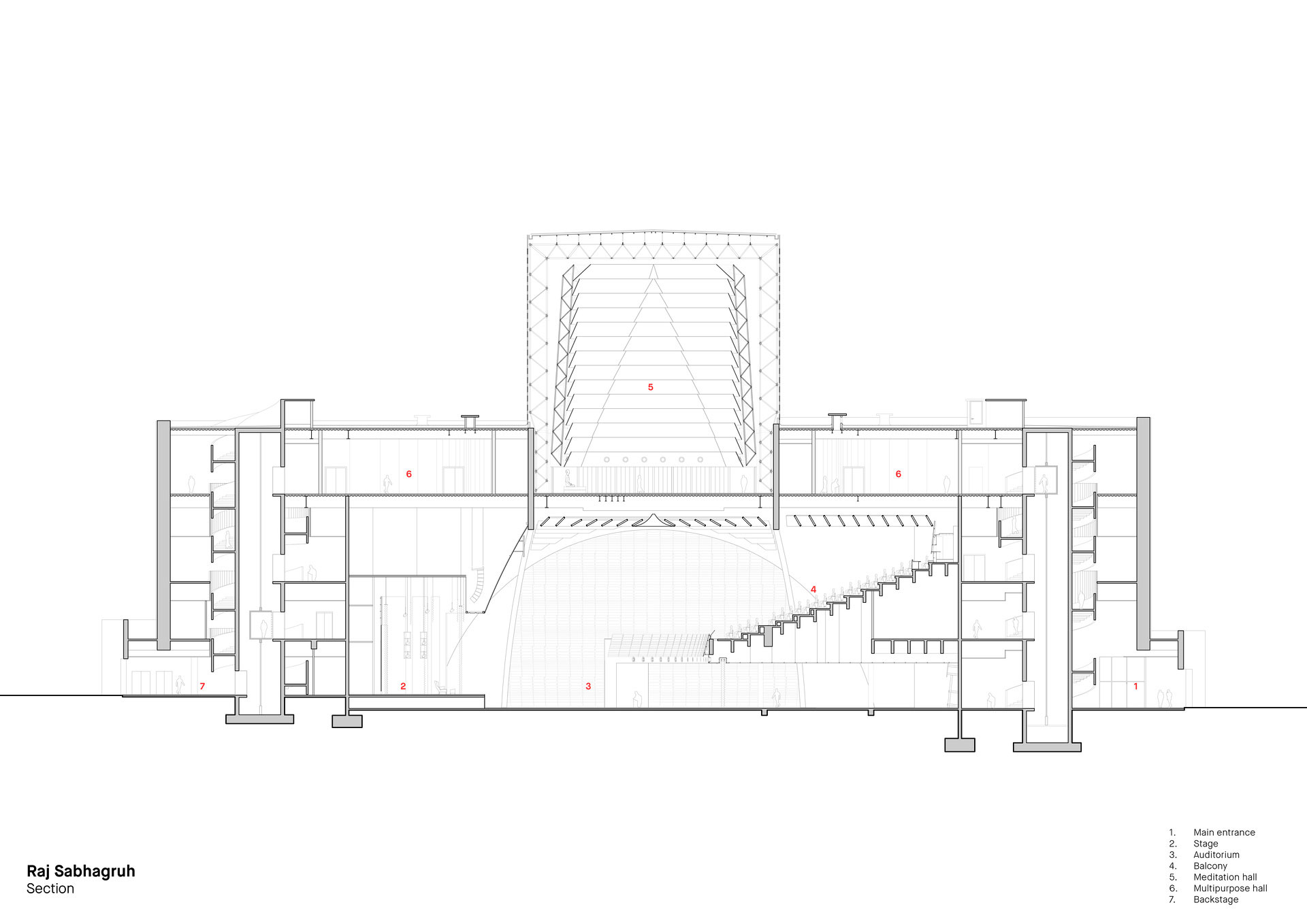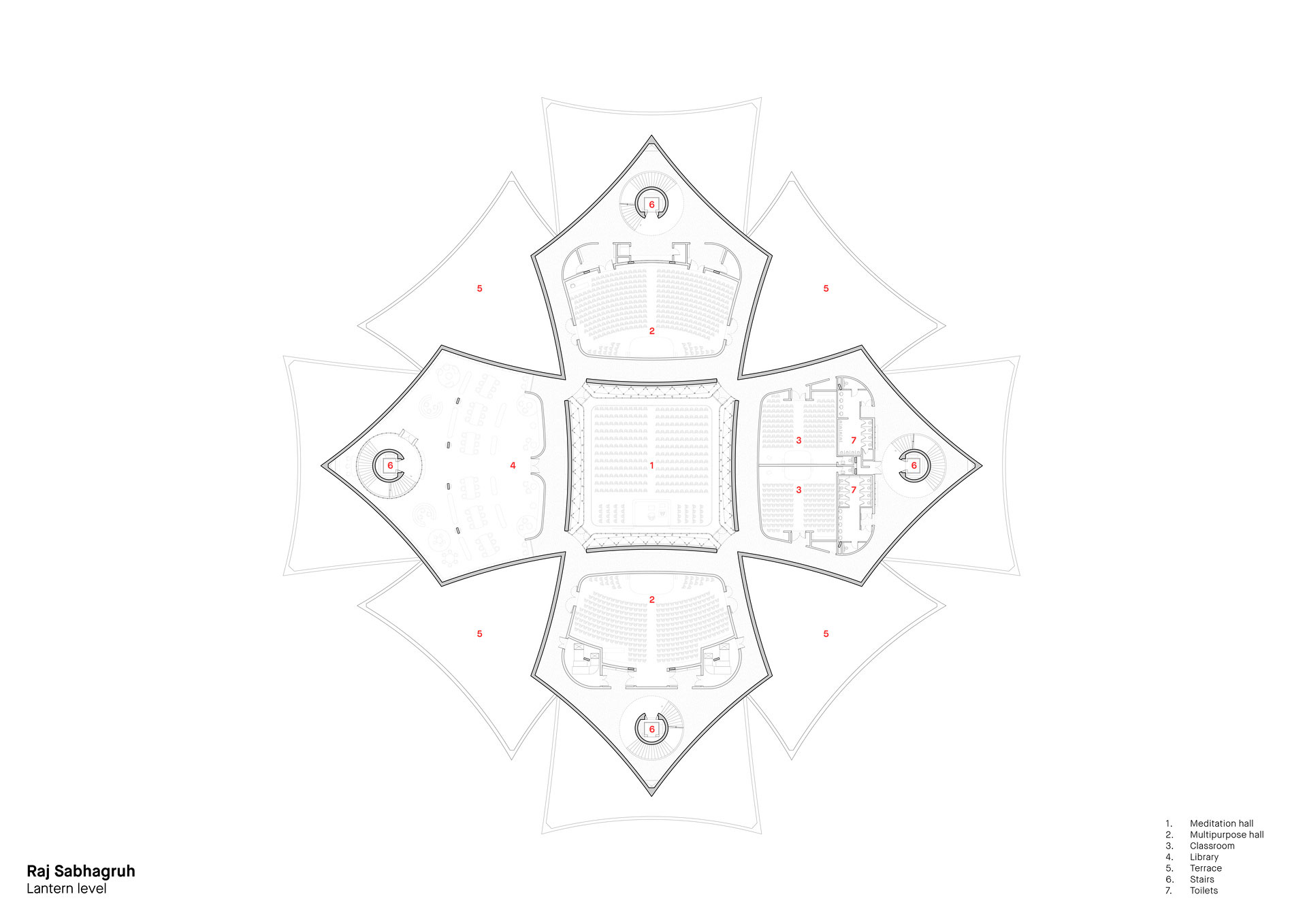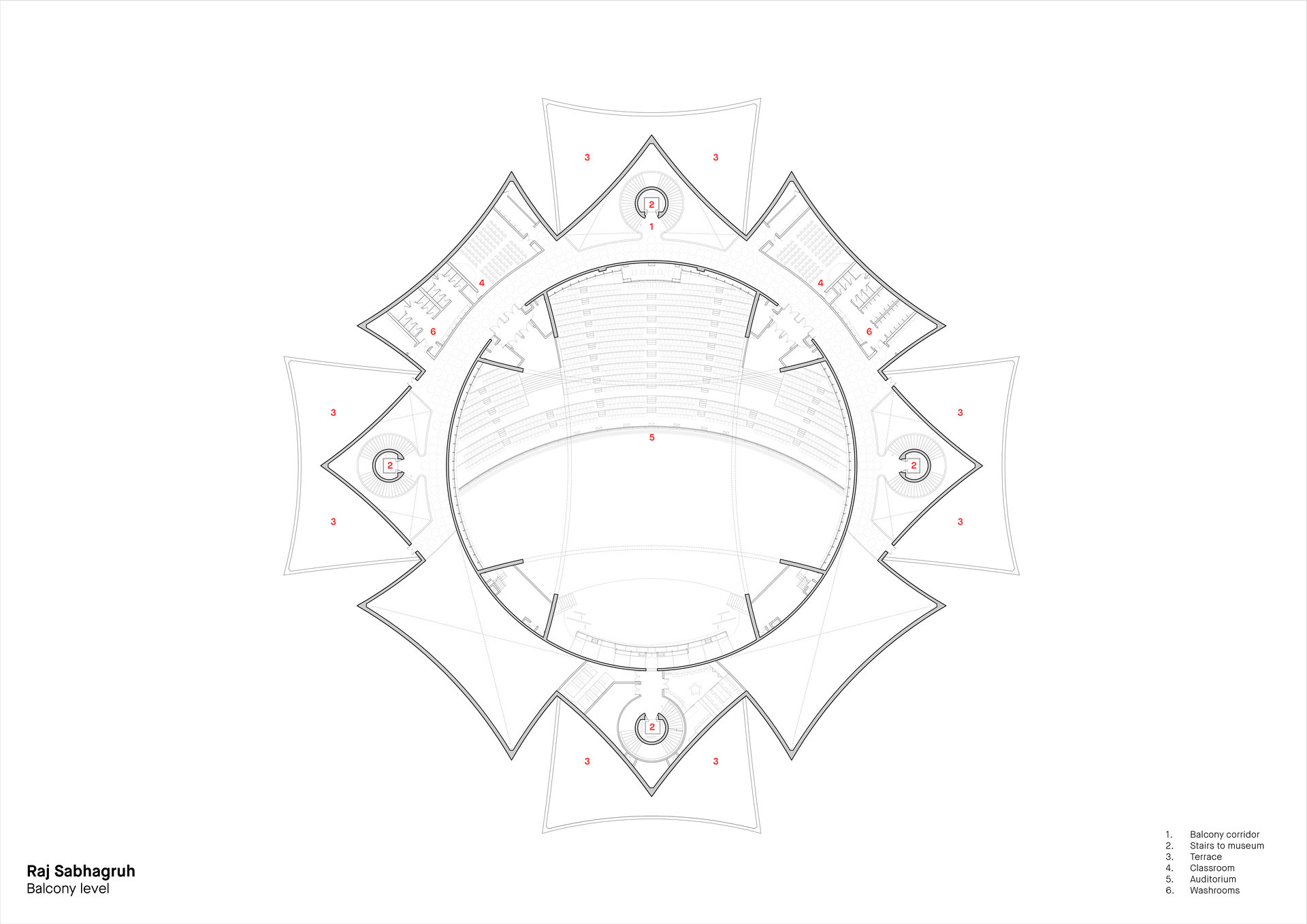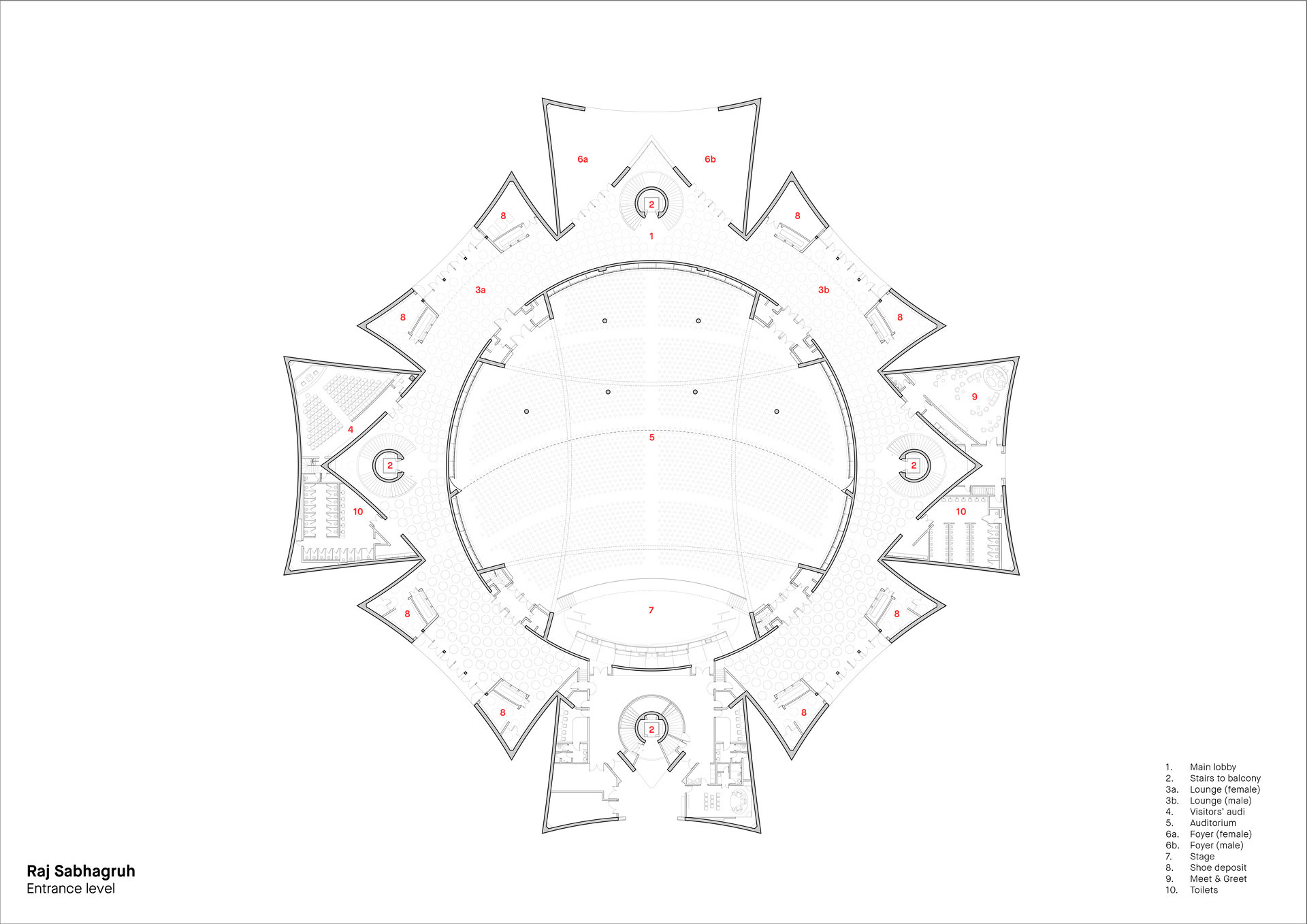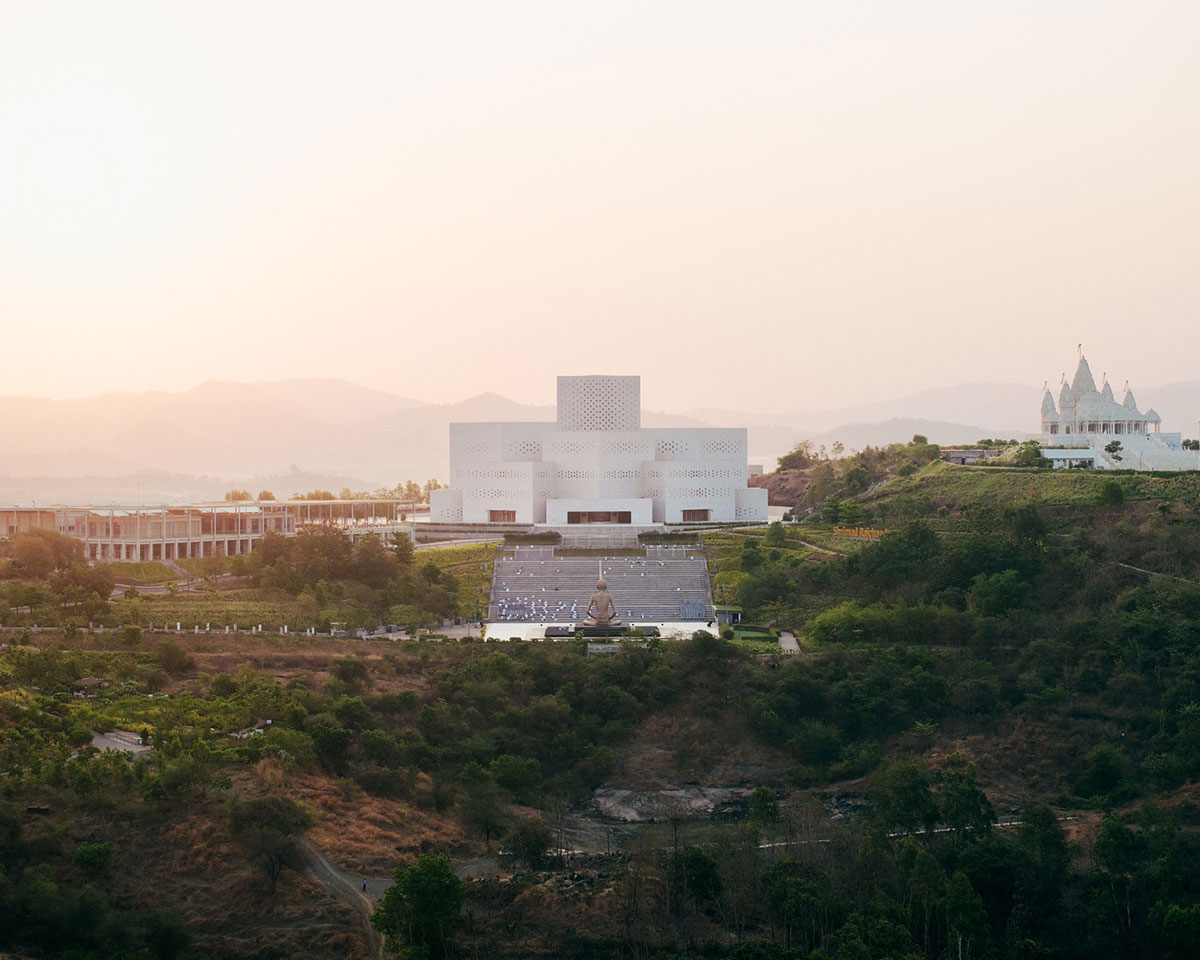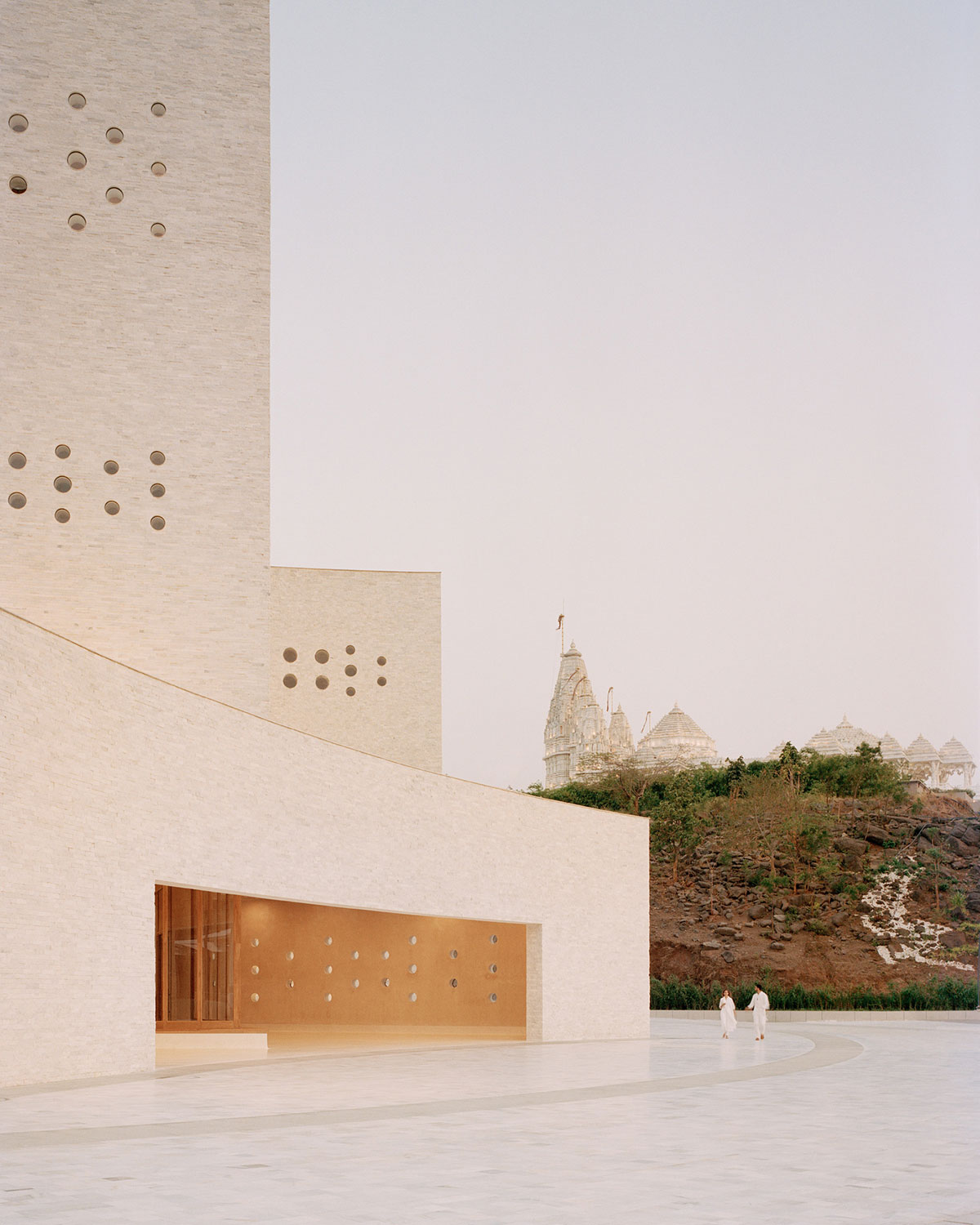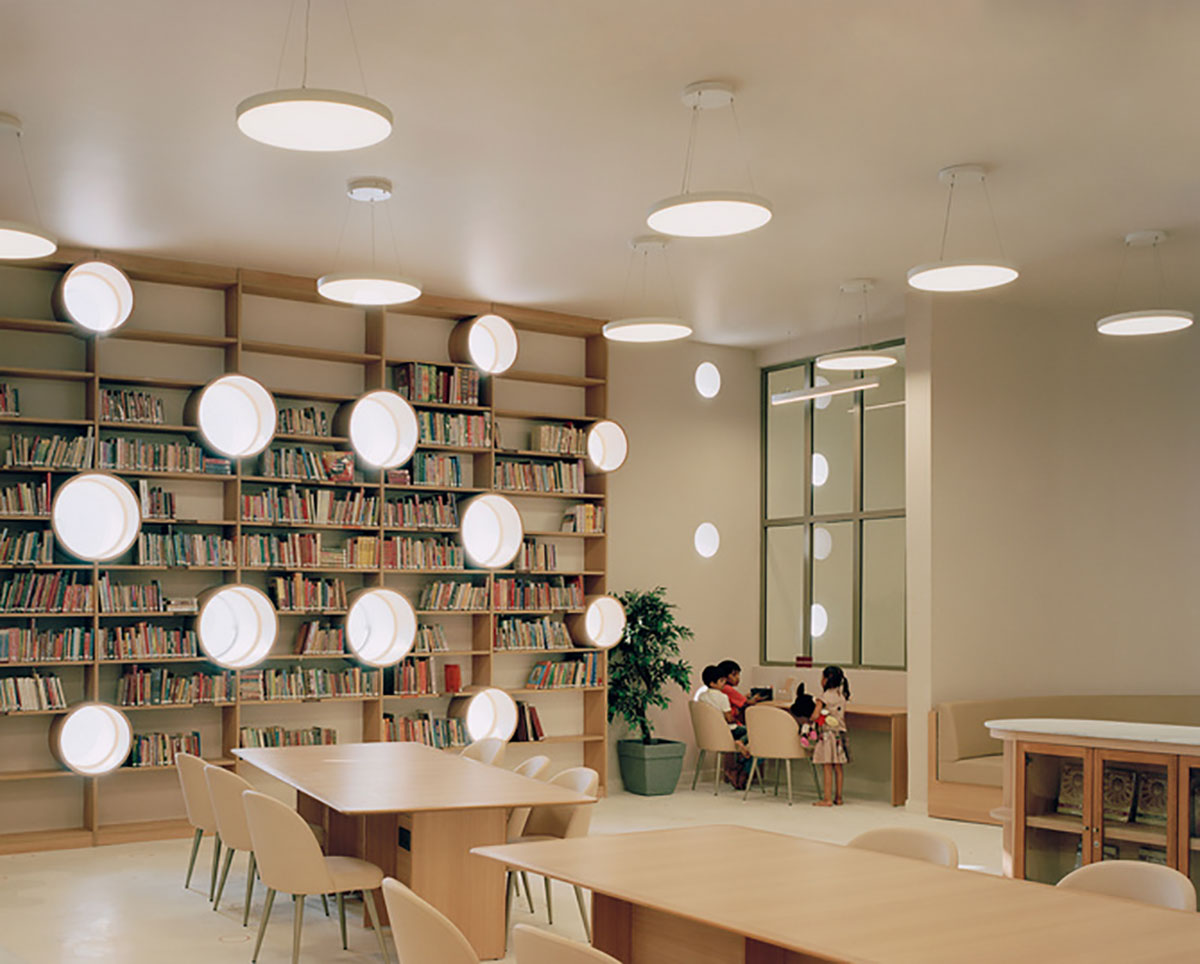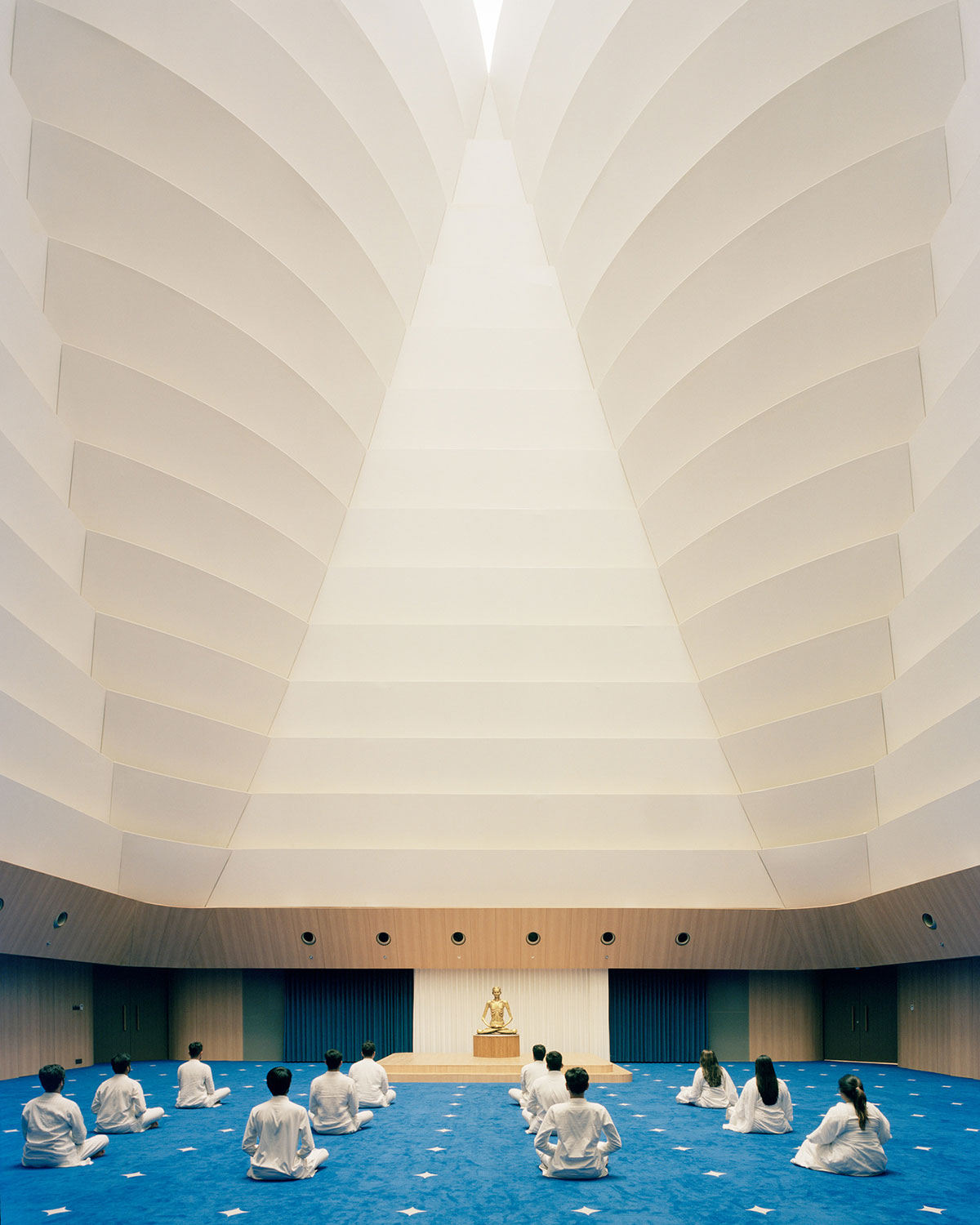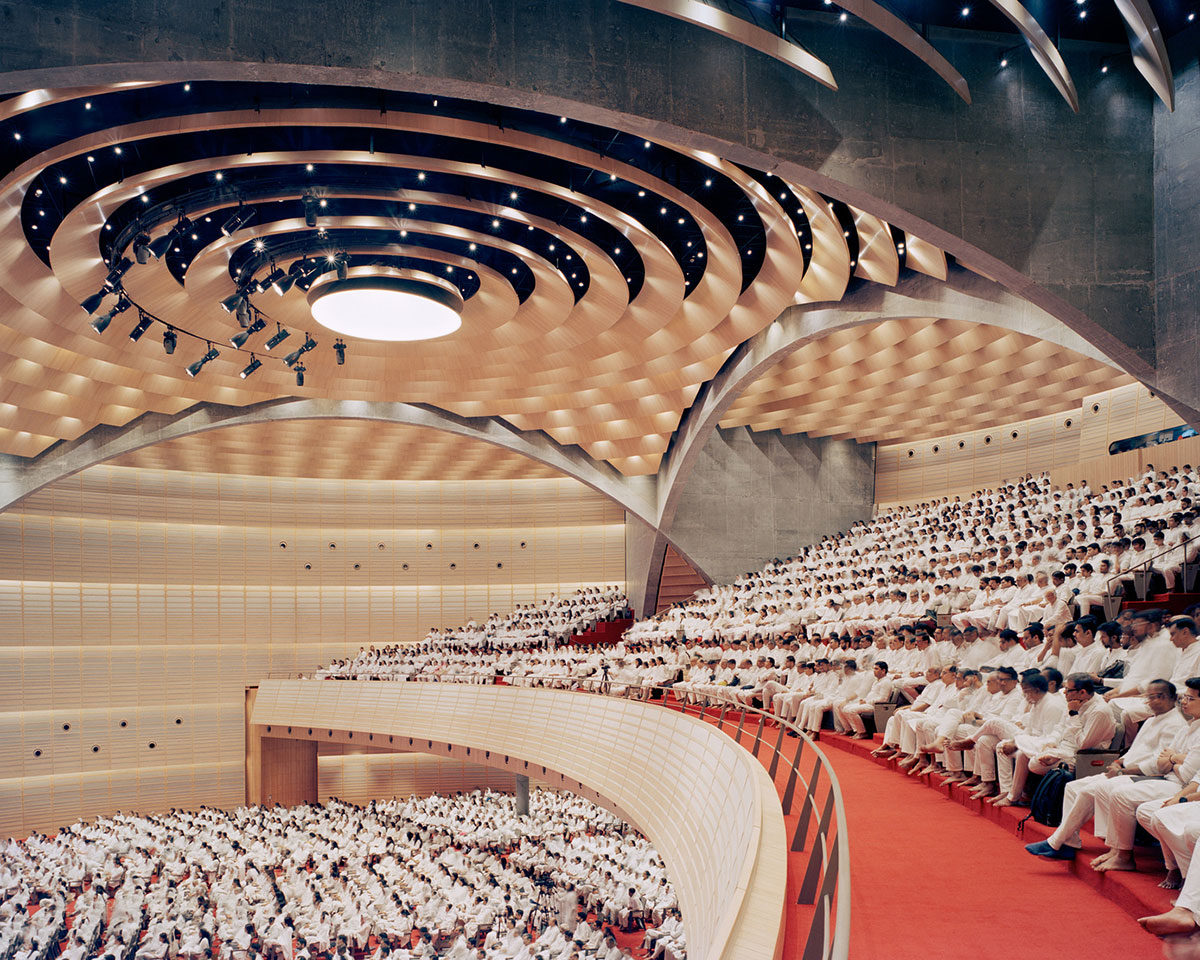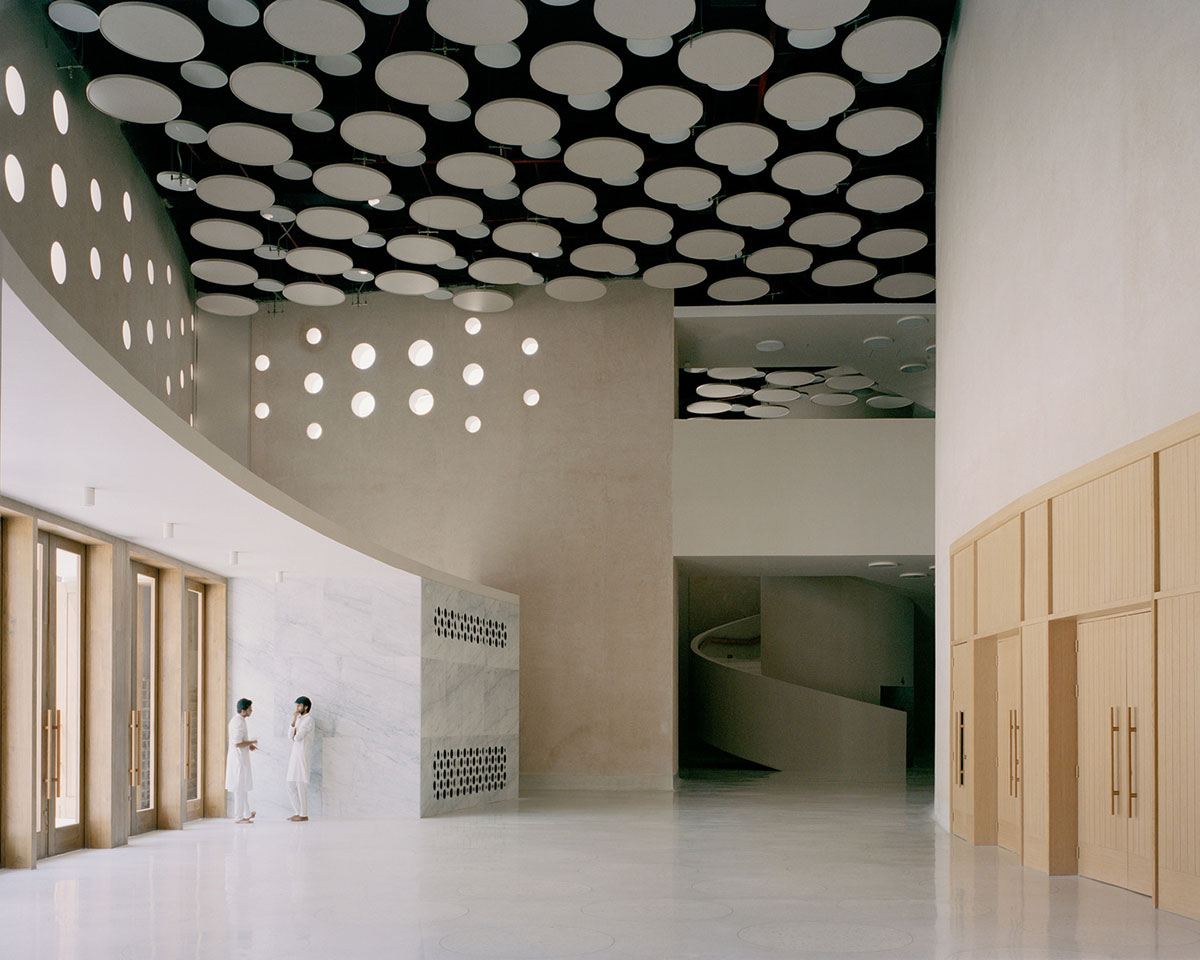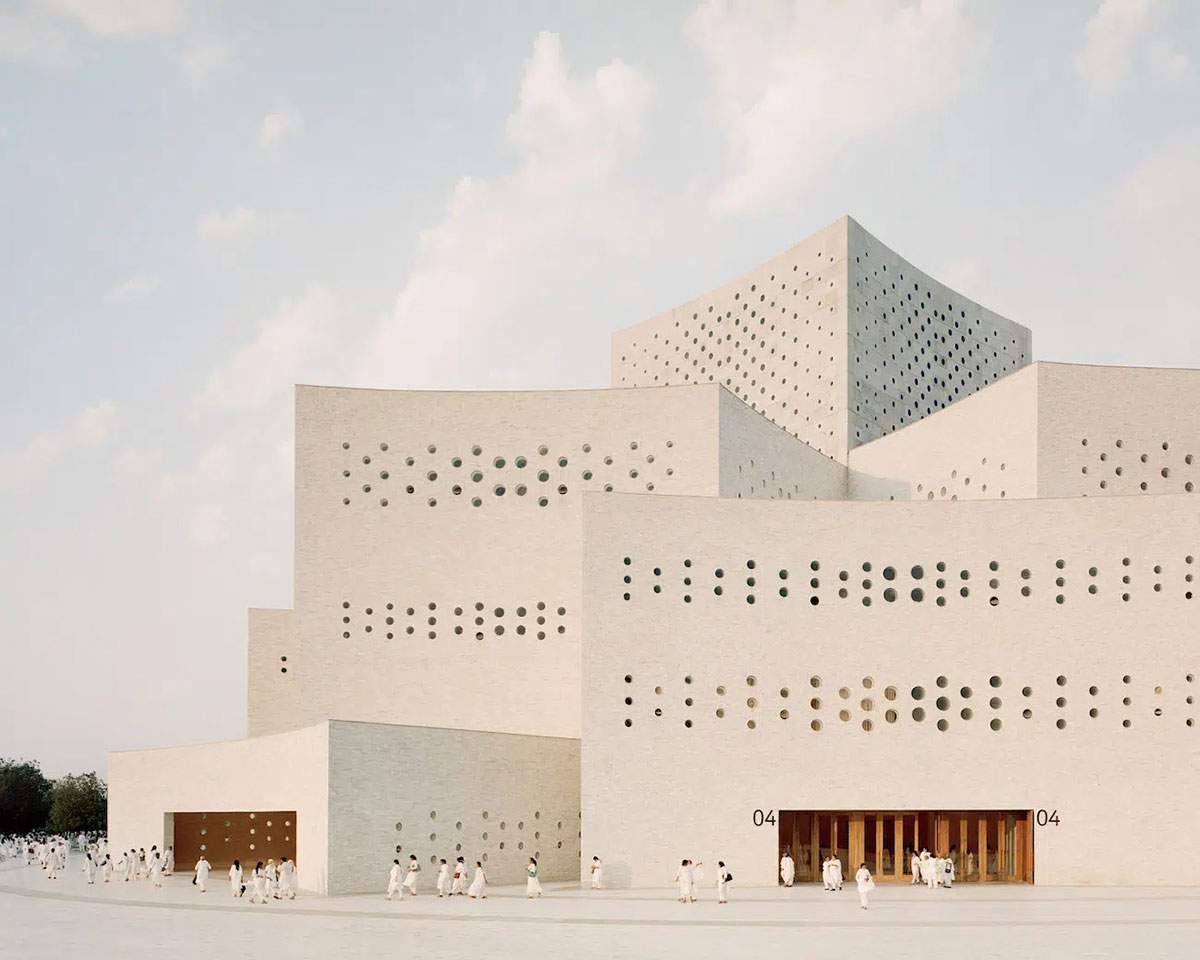In the city of Dharampur, in southern Gujarat, the westernmost state of India, spirituality takes material form in a work of architecture. It was the British studio Serie Architects that created the oxymoron, the design of this sanctuary, a place conceived for meditation and community gathering.
A space inhabited by the teachings of Shrimad Rajchandra, a sage of Jainism—an Indian doctrine originating in the 6th century BC, which preaches a non-theistic philosophical path to guide the soul-consciousness toward a state of liberation—who is known as being Mahatma Gandhi’s spiritual guide. This was commissioned by the Shrimad Rajchandra Mission Dharampur, the city’s headquarters of “a spiritual movement for inner transformation through wisdom, meditation, and selfless service,” which has 206 centres “on six continents”. It is the Satsang Hall.
The Satsang Hall building departs from convention to embrace a pure and symbolic geometry. Its architecture embraces silences, shaping them. The design, with a circular shape at its heart—without beginning or end—seeks a balance that is both universal and deeply rooted in its spiritual context, perhaps denoting the eternal nature of the teachings imparted within its walls.
The Satsang Hall finds a model in mandalas, those cosmic diagrams that represent diversity within unity. The materials—brick, marble, and concrete—are rooted in local tradition. In fact, as its architects tell us, “the exterior façade is clad with over half a million hand-cut marble bricks sourced from Makrana, Rajasthan.” Light, filtering through strategic openings at the top and sides, transforms the space into a living organism that breathes to the rhythm of the sun.
What is extraordinary about the architecture of the Satsang Hall and the design by Serie Architects is that it avoids folklore without falling into minimalist coldness. In that sense, the Satsang Hall is not only an achievement, but also a poetic statement. A building that belongs to the land that sustains it, to the community that inhabits it, and to the tradition that inspires it.
Sources: Serie Architects, Shrimad Rajchandra Mission Dharampur.
Images: Rory Gardiner via Serie Architects.


